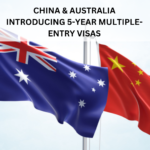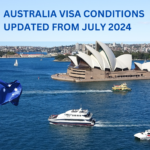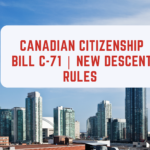
2024 IRCC Express Entry Draws | Key Categories
2024 IRCC Express Entry Draws : First of all, With a new focus on targeted selection to achieve economic goals, Immigration, Refugees and Citizenship Canada (IRCC) made substantial modifications to the way it conducted its Express Entry drawings in 2023. Prospective immigrants and immigration experts alike are curious about the categories that will be the focus of the Express Entry lotteries as we approach 2024. We explore the six main areas that the IRCC will keep focusing on in 2024 in this in-depth guide, which clarifies the requirements and ramifications for potential applicants. Understanding the 2024 IRCC Express Entry Draws New Selection Process: The Immigration and Refugee Council (IRCC) redesigned the process for choosing applicants for Express Entry rounds of invitations (ITAs) in 2023. In order to ensure that immigrants with particular credentials—such as education, work experience, or language proficiency—are selected to accomplish these goals, this system was created to better correspond with economic requirements and priorities. Categories for Express Entry Draws: 2024 IRCC Express Entry Draws a. Healthcare Occupations (35 designated occupations): 2024 IRCC Express Entry Draws | The healthcare sector continues to be a focal point for immigration, with 35 designated occupations ranging from nursing to medical laboratory technology. Prospective candidates with relevant experience in these fields are well-positioned to receive invitations in Express Entry draws. b. STEM (Science, Technology, Engineering, and Math) Occupations (25 designated occupations): 2024 IRCC Express Entry Draws | With the increasing demand for skilled professionals in STEM fields, IRCC has identified 25 occupations within this category for targeted selection. From software engineering to biotechnology, individuals with expertise in STEM disciplines play a crucial role in driving innovation and economic growth in Canada. c. Trade Occupations (10 designated occupations): 2024 IRCC Express Entry Draws | Skilled tradespeople are in high demand across various industries, including construction, manufacturing, and transportation. IRCC has earmarked 10 trade occupations for Express Entry draws, recognizing the vital contributions of trades professionals to Canada’s infrastructure and workforce. d. Transportation Occupations (10 designated occupations): 2024 IRCC Express Entry Draws | The transportation sector is integral to Canada’s economy, facilitating the movement of goods and people across the country. Candidates with experience in designated transportation occupations, such as truck driving and aviation maintenance, are essential for sustaining this critical infrastructure. e. Agriculture and Agri-food Occupations (3 designated occupations): 2024 IRCC Express Entry Draws | Agriculture and agri-food sectors play a pivotal role in ensuring food security and driving rural economies. IRCC has identified three key occupations within this category, including farm management and agricultural technician roles, to address labor shortages and support sustainable agricultural practices.Read More about Canada Immigration. Impacts for Interested Candidates: Using the Express Entry system effectively necessitates planning, particularly in view of the particular categories that the IRCC has established for 2024. To increase their chances of being invited to participate in Express Entry drawings, prospective candidates must evaluate their qualifications and match them with the selected vocations. Furthermore, improving one’s language skills—especially in French—can greatly increase one’s competitiveness during the hiring process. In conclusion, it is essential for potential applicants to comprehend the main categories and requirements provided by the IRCC as Canada continues to accept skilled immigrants through the Express Entry system. Through attention on CLB Level 7 fluency in French and the possession of pertinent work experience in approved professions, candidates can set themselves up for success in receiving invitations to participate in Express Entry lotteries. For talented professionals looking for fresh possibilities in the Great White North, obtaining permanent residence in Canada becomes more feasible with careful planning and preparation.







